Category Archives: Logging
Neurological and birth defects haunt Wabaseemoong First Nation, decades after mercury dumping

Bill Henry, 66, believes the numbness in his hand, which leaves him unable to feel a cut, is caused by mercury poisoning. (Martha Troian)
People in community born without toes, an extra thumb, but few are compensated
By Martha Troian, CBC News, September 20, 2016
Forty-five years ago, mercury pollution from a pulp and paper mill poisoned hundreds of kilometres of waterways in northwestern Ontario.
Asubpeeschoseewagong First Nation, also known as Grassy Narrows, often makes headlines for its fight against the mercury poisoning. But few have heard of a tiny community called Wabaseemoong, also called Whitedog, just downstream. Read the rest of this entry
Industry off the hook for mercury monitoring at mill that poisoned Grassy Narrows First Nation
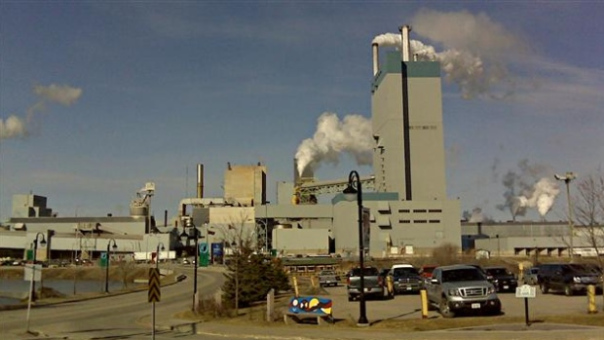
Former owners of the paper mill in Dryden, Ont. are not liable for remediation orders from the Ontario government, a court ruled. (Louis-Phillippe Leblanc/Radio-Canada)
Deal struck by Ontario in 1979 to save Dryden mill continues to indemnify Weyerhaeuser, Resolute, court rules
By Jody Porter, CBC News, August 9, 2016
Taxpayers, not industry, will have to pay for environmental monitoring at a pulp mill in Dryden, Ont., infamous for its poisoning of people in two northern Ontario First Nations, according to a recent ruling by an Ontario court. Read the rest of this entry
Altas documents industrialization of Northern B.C. First Nations’ territory
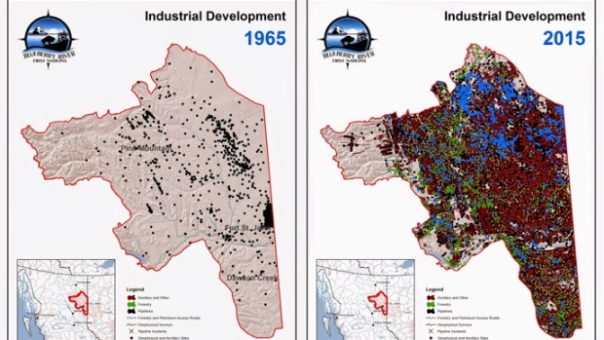
The Blueberry River First Nations released these maps in 2015 which compare industrial activity today to 50 years ago. (Blueberry River First Nations)
Blueberry River First Nations say logging, oil and gas and pollution destroying traditional territory
By Liam Britten, CBC News, June 29, 2016
A new report from the Blueberry River First Nations in northeastern B.C. says industrial activity is destroying their traditional territory.
The report, entitled Atlas of cumulative landscape disturbance in the traditional territory of Blueberry River First Nations, found 84 percent of the First Nations’ traditional territory is within 500 metres of an “industrial disturbance” such as an oil or gas well, roadways, forestry cut blocks, agriculture or seismic lines. Read the rest of this entry
Grassy Narrows mercury protesters dump grey liquid at Queen’s Park

Protesters dumping a grey sludge in front of Queen’s Park to protest the clean up of Grassy Narrows First Nation in northern Ontario. (Mike Crawley/CBC)
Protesters handcuffed by police, say the substance is corn starch with water and soluble paint
By Nicole Brockbank, CBC News, June 23, 2016
Grassy Narrows mercury poisoning protesters dumped grey liquid in front of Queen’s Park and then were taken into custody by police on Thursday morning.
The spill happened just before 10:30 a.m. in front of the steps to the legislature. Security asked people to move back from the liquid on to the lawn and then police pushed people back further to the south end of the lawn “for safety,” according to officers on scene. Read the rest of this entry
‘Guilt’ drives former Dryden, Ont. mill worker to reveal his part in dumping toxic mercury
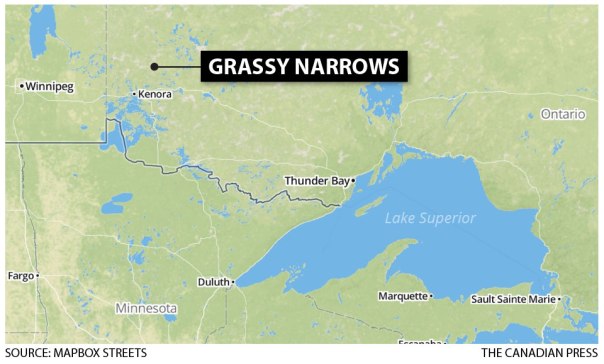 Grassy Narrows First Nation concerned hidden mercury dump is the source of on-going contamination
Grassy Narrows First Nation concerned hidden mercury dump is the source of on-going contamination
By Jody Porter, CBC News, June 20, 2016
A former employee of the paper mill in Dryden, Ont., has written a letter describing what he says is a hidden dump of dozens of mercury barrels that could be the source of on-going health concerns downstream at Grassy Narrows First Nation.
Mercury contamination from Reed Paper’s chemical plant in Dryden during the 1960s and 70s is a well-studied environmental disaster. Read the rest of this entry
Grassy Narrows First Nation demands cleanup of mercury contamination in northern Ontario
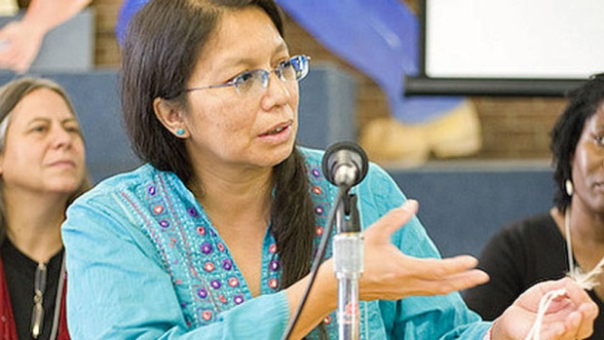
‘It’s a war zone. I can’t say enough how we need that river to be cleaned up,’ says Judy DaSilva, the environmental health co-ordinator at Grassy Narrows First Nation. ‘Our relatives are dying.’
‘Are our lives worth less?’ Grassy Narrows First Nations Chief Simon Fobister says
By Jody Porter, CBC News, May 31, 2016
The chief of Grassy Narrows First Nation in northern Ontario says mercury dumped in the waterways near his community nearly 60 years ago must be cleaned up.
Simon Fobister made the statement Tuesday, one day after scientists released research showing it is possible to remediate at least some of the lakes and rivers near Grassy Narrows. Read the rest of this entry
Grassy Narrows First Nation marks 13 years as ‘the voice of the forest’
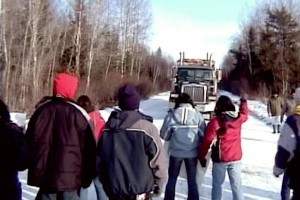
Grassy Narrows youth blockade logging trucks, 2002.
Grassroots blockade against logging trucks north of Kenora, Ont. started on Dec. 2, 2002
By Jody Porter, CBC News, Dec 3, 2015
In the beginning, Randy Fobister of Grassy Narrows First Nation, in northwestern Ontario, disagreed with community members who were stopping logging trucks from entering their traditional territory, but 13 years later the deputy chief says “it’s really important the blockade is still there.” Read the rest of this entry
Video: The Battle Of The Great Bear Rainforest
by subMedia.tv, Vimeo, Sept 28, 2015
In the 1990’s the Nuxalk Nation engaged in a campaign of direct action, to stop logging on their traditional lands, also known as the Great Bear Rainforest. Nuxalk Hereditary Chief Qwatsinas, was at the forefront of this struggle.
To find out more about how the battle for the Great Bear Rainforest was hijacked by Greenpeace and other environmental NGO’s visit – offsettingresistance.ca


